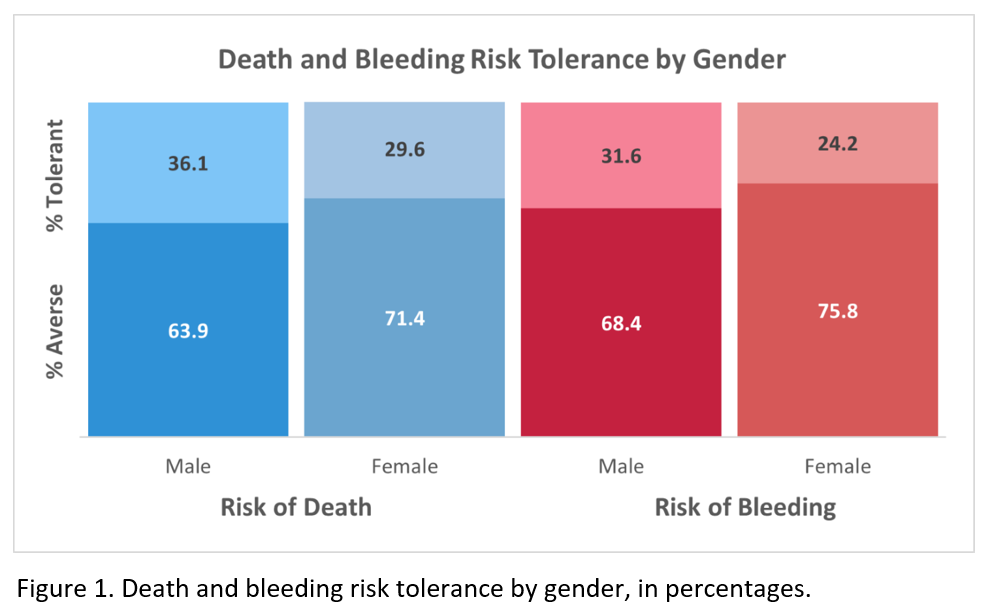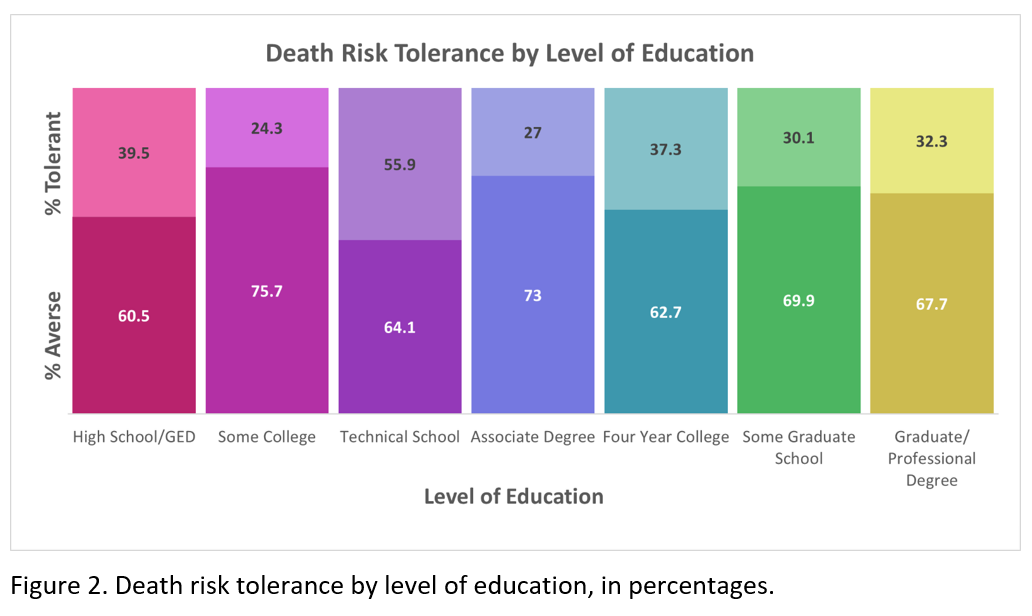Category: Surgical Therapy: Parkinson's Disease
Objective: To determine the sociodemographic factors of people with Parkinson’s disease (PD) associated with risk tolerance when considering interventions.
Background: Gender and racial disparities in PD are well established. Factors including race and insurance status affect which patients are referred for deep brain stimulation (DBS) [1]. Women are less likely than men to undergo DBS surgery due to patient preferences [2]. Why these disparities exist remains unknown. Sociodemographic differences in patient attitudes and perceptions about surgical treatments for PD are not yet established.
Method: We reviewed survey data from the Fox Insight Study, which is funded by The Michael J. Fox Foundation. We included responses from people with PD, who were PD surgery-naive, and completed the Patient Therapeutic Preferences Questionnaire. We reviewed responses to questions on how likely a person with PD was to agree to a hypothetical treatment with risks of death or bleeding for potential benefits of improving ON time, reducing severity of symptoms, or reducing pill burden. We analyzed bleeding risk and death risk data separately. Within each group, responses were categorized into risk averse (will not change current treatment) versus risk tolerant (may consider the hypothetical treatment), and then analyzed by age, gender, race/ethnicity, income, education, marital status, and employment status. Chi square or Fisher exact test was used, as indicated; odds ratio was calculated post-hoc.
Results: A total of 1385 responses on bleeding risk and 1402 on death risk were included. Males were significantly more risk tolerant than females (bleeding risk: X2(1)=8.920, p=0.0028, OR 1.44 [1.140-1.836]; death risk: X2(1)= 8.602, p=0.0034, OR 1.41 [1.125-1.768]). [Figure1] There was also a significant difference between level of education when considering death risk (X2(6)=12.742, p=0.047). [Figure2] Those with post-graduate or greater level of education were more risk averse. There were no differences in the other sociodemographic categories.
Conclusion: Men with PD are more likely to tolerate risks associated with new treatment compared to women, consistent with prior findings. Education level may also affect risk tolerance. There were several limitations including unequal sample sizes and response bias. Further dedicated studies are warranted so that clinicians can be informed of disparities and improve efforts to provide more equitable care.
Figure 1
Figure 2
References: [1] Shirane R, Nisson M, Moran E, Shanker VL, Palmese CA. Cultural Disparities in Deep Brain Stimulation (DBS) Decision Making in Patients with Parkinson Disease (PD) (1713). Neurology. 2020;94(15 Supplement). Accessed May 22, 2023. https://n.neurology.org/content/94/15_Supplement/1713
[2] Shpiner DS, Di Luca DG, Cajigas I, et al. Gender Disparities in Deep Brain Stimulation for Parkinson’s Disease. Neuromodulation: Technology at the Neural Interface. 2019;22(4):484-488. doi:10.1111/ner.12973
To cite this abstract in AMA style:
B. Dukes, A. Colombo, K. Patel, D. Shah-Zamora. Risk Tolerance of Therapeutic Interventions in People with Parkinson’s Disease [abstract]. Mov Disord. 2024; 39 (suppl 1). https://www.mdsabstracts.org/abstract/risk-tolerance-of-therapeutic-interventions-in-people-with-parkinsons-disease/. Accessed December 18, 2025.« Back to 2024 International Congress
MDS Abstracts - https://www.mdsabstracts.org/abstract/risk-tolerance-of-therapeutic-interventions-in-people-with-parkinsons-disease/


